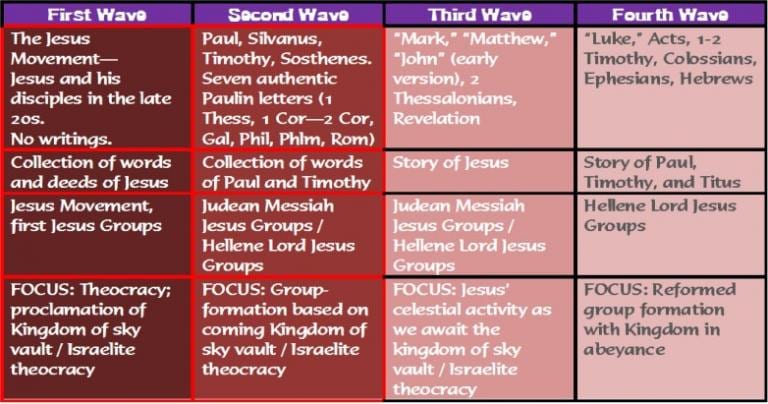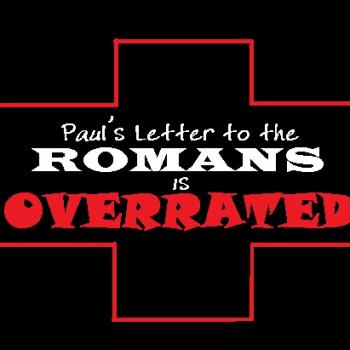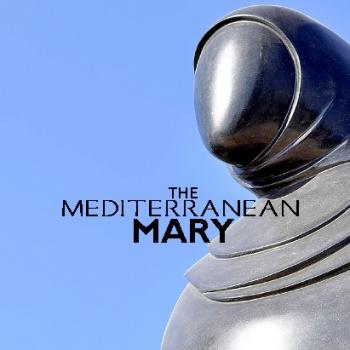
Popes and Peter relate, as do Apostles and Bishops—but never in oversimplified ways.
Popes are counted at 266 in all by very popular Catholic understanding. These Roman popes are considered by Catholics as the heirs of Saint Peter Apostle, bishop of Rome. At least that is how popular imagination has it. That is the language we use about what happened to the illiterate Galilean fisherman Simeon bar Yonah ha kefa ha ṣaddîq.
A couple days ago, on February 22, Catholics celebrated the Feast of the Chair of Saint Peter, Apostle. The feast commemorates Jesus choosing Simon Peter to serve as shepherding authority over the entire Church. In St. Peter’s Basilica there is an old wooden chair that legend says was Peter’s throne on which he ruled over the Church much in the style of later popes. The relic was a gift bestowed to Pope John VIII by the Holy Roman Emperor Charles the Bald in 875. Research has demonstrated that nothing of the chair can be any older than 500 CE.
The traditionally held belief is that Peter was martyred at Rome. This could not have been later than the 60s CE. Decades after, at the close of the first century—right before the final version of the Fourth Gospel called “John” was set—the Jesus group at Rome sent a letter to the Jesus group at Corinth. It was filled with admonitions. It’s author was someone named Clement, a presbyter (elder) of the Jesus group in Rome
How should we imagine Clement and his role? Was he exercising his rights as one of the popes? Was Clement the Supreme Pontiff ruling over the Church at Corinth?
Clement and the Popes
If we follow literally the traditional language, then we would acknowledge that Clement was indeed one of the 266 Roman popes, the monarchical bishop to the Eternal City. We would therefore imagine him as the supreme authority of all bishops and faithful on earth, vicar of Christ, Supreme Pontiff. But we should ask: did Clement possess all the mind-boggling claims of Pope Gregory VII? Did he enjoy the powers of Boniface VIII, who shamelessly dressed in imperial regalia and proclaimed himself emperor as well as pope? Did Clement wield the brutal imperial strength like Pius V did? If you claim that Clement was like these later popes, you are guilty of gross anachronism.
So why call Clement fourth (or second? Or third? The lists are so confusing!) of all the popes? For that matter, why claim that Peter was the first of the popes? Instead of a monarchical bishop, 21st century people might better think of Clement as something like an executive secretary, perhaps the spokesperson for the elders of the Roman Jesus group. Maybe he was the only elder of the Jesus group in Rome who could write! But to think of him as the bishop of Rome? It’s silly to think his peers thought of either Clement or Peter in that way.
Confusion Concerning Early “Popes”
How did Catholics begin thinking of Clement that way? As the spokesperson and secretary of the elders of the Jesus group in Rome, Clement was the literate letter-drafter. So Clement got remembered as the most prominent of the presbyters of his day there. Because of this, decades later, in the first lists of the Roman episkopoi (a Greek term which eventually evolved to mean “bishops”), Clement was remembered as being “the one bishop.”
Early proto-orthodox figures living at the end of the second century would look back over one hundred years to the apostles seeing them in ways familiar to the structures in the Jesus groups of which they were familiar in their times. Most people throughout history have viewed the past statically. Scholars like the late Fr Raymond Brown suggest that sometime just before his death in the 60s, Simon Peter had visited the Jesus group at Rome. Peter had been the first among the Twelve. That would have made him the most prominent figure in the Roman Jesus group when he visited it. But don’t think that demands he administrated anything there, ruled over it, or anywhere else for that matter.
The Greatest of all Popes
That famous Peter visited Rome and was martyred there got remembered. The memories were embellished, augmented, and updated as new crises faced the early Jesus groups. Meanings shifted. Over the decades, a terminology evolved describing and communicating this memory, honoring Peter the martyr.
Approximately 130 years after Peter’s death, an evolved language of late second century Jesus groups remembered Peter as the bishop of the Jesus group at Rome. But never would Peter’s own contemporaries have called him that or would have shared that understanding!

Therefore the lists of popes and other early bishops preserves for us who the most prominent and authoritative figures were in the history of a particular Jesus group. But they forget things too, like how first century Jesus group structures were different than late second century structures. They forget also how all of these were different once Constantinian Christianity arrived.

You should never forget that whenever you move the language, whether through time or space, the meaning necessarily changes. Thus episkopos and presbyteros in the late second century don’t mean exactly what they meant back in the first century! And once Empire wedded the Jesus groups?—this presented a big paradigm shift!
Popes and Catholic Continuity
Does this in any way subtract or steal from the importance of Peter and his stay in Rome? And does it destroy the Petrine Ministry of the Church? Does it demolish the papacy? Not at all.
But it does teach us several important things. For instance, we learn what that there is evolution within our C/catholic continuity with Jesus and the apostles. We learn that Peter wasn’t really a local, monarchical bishop. Indeed, Peter’s importance soared high above a mere managing figure to a small congregation of believers! In fact, his importance was so great that he became the symbol for the unity of all shepherding figures in the subsequent Jesus groups.
The New Testament documents reflect this Petrine importance in their employment of various Petrine images. It is out of this array of Petrine imagery and symbols that we can see a trajectory of development emerging. Out of this eventually emerged the papacy. And it’s a rough, messy ride, folks!
Listing the Popes
By the middle of the second century, the Jesus group at Rome had evolved to accept the structure of a single overseer managing things. This servant-leader was assisted by multiple elders. Other mid-second century Jesus groups were in this process also. By the time we reach the beginning of the third century, major cities have Jesus groups complete with their own list of bishops. Irenaeus (d. 202), for example, lists the bishops of Rome. He lists Peter first. But what does that mean?
Before the middle of the second century, likely various issues and crises facing the Roman Jesus group were addressed collectively by a group of elders. In the case of Clement it is easy to see how, quite accidentally, he stood out from the bunch, as their letter-writer or secretary. But from about 150 CE on, the managing elder of the Jesus group at Rome was called “episkopos.” This servant-leader was probably a shamanic figure like Peter in the first century and others, one capable of inducing altered states of consciousness experiences. These managers wore other hats also.
The Pastoral Letters and “Bishops”
Even though the three Pastoral Letters—1—2 Timothy and Titus—were attributed to Pauline authorship, they are forgeries. Inspiration does not change that. They were composed some decades following the deaths of James, Peter, and Paul. They reflect Jesus groups coming to terms with the refusal of Parousia and Theocracy to materialize. Now the emphasis shifts to hammer out the structure of the Jesus groups.

So what do we see in these writings? We see campaigns at work to establish elder-overseers appointed in each Jesus group. They worked alongside diakonoi (“ministers”). What exactly did these elder-managers do? At least some of them taught. And some oversaw the distribution of the goods of the Jesus group. Some watched over the theological innovations of individual members as well as their conduct. And some lead members in various altered state of consciousness group-experiences that frequented among the Jesus groups.
But monarchical bishops came later.
Plural Overseers and Ministers Overlap
Consider the opening of Paul’s letter to the Jesus group at Philippi—
Philippians 1:1
Paul and Timothy, slaves of Christ Jesus, to all the holy ones in Christ Jesus who are in Philippi, with the overseers (ἐπισκόποις) and ministers (διακόνοις)…
Notice in the address episkopois (plural for overseers) and diakonois (plural for ministers). Way later on these words will mean something more familiar to our Christian experience—episkopos will eventually mean “bishop,” and diakonos will eventually mean “deacon.” But all the way into the post-apostolic period (post AD 100) how does one exactly distinguish diakonoi from presbyteroi? That’s not clear!
Note that these servant-leaders are plural, not one and monarchical. Still in late New Testament times, shepherding figures are plural. Some authority, structure, and hierarchy exists at even the most primitive times, but it is not the same in the latter half of the second century. The Church grows in continuity with Jesus, but never without development. The development is real.
So a key takeaway from this is that the terms episkopos, presbyteros, and diakonos mean one thing in the first century and another thing in the late second. There is continuity—but a continuity within development. Be careful not to be anachronistic with the terms.
Ignatius and Monarchical Bishops
By the days of Ignatius of Antioch (d. 110), in some Mediterranean places Jesus groups were developing the pattern of one bishop overseeing an entire local Jesus group. Presbyteroi and diakonoi served under him. As time approached the third century this had become standard.
As with the Gospels, it is easy to anachronistically read things into Ignatius’ writings. We should take care not to confuse Ignatius’ own theological understandings as the universally accepted norms of his day.
Weren’t the Twelve Apostles the First Bishops?
We have lots of confusion about the function of the Twelve figures who made up Jesus’ inner circle. All of “the Twelve” were apostles, but not all of the apostles were “the Twelve.” Apostles were not limited to “the Twelve.” We must make a crucial distinction between the role of “the Twelve” and the role of the Apostles, even if some wore both hats.
“The Twelve” had a cosmic role, sitting on twelve cosmic thrones judging over the twelve tribes of Israel (Matthew 19:28; Luke 22:28-30; cf. Isaiah 66:1; Matthew 25:31; Daniel 7:9, 22; Revelation 3:21; 4:20). Scholars like Raymond Brown explain that this specific role shared by the Twelve cannot be transferred. Bishops succeed the apostles, but are not the successors of the Twelve. Because Judas surrendered his role among the Twelve, Brown explains, he had to be replaced (Acts 1:12-26). The renewal of Israel would have been impossible otherwise.
Apostles vs Bishops
Apostles do not “judge the twelve tribes of Israel” and there were many more than just twelve of these change-agents. They had the role of going forth and proclaiming the innovation—the Good News—of Jesus Messiah and the Reign of God, and of forming Jesus groups. They formed these Jesus groups among Judaeans and diaspora Israelites.
The apostolic mission brought into being communities that demanded pastoral care—hence the shift from “fishing” (missionary) to “shepherding” (pastoral) in Wave Three.
It is in this time, the final third of the first century, where we find the “episkopoi” (overseers or managers, not yet “bishops”). These figures gave pastoral servant-leadership to the Jesus groups. At first there were multiple overseers. But later on the standard practice would be to have only one. Therefore reason agrees with Catholic doctrine that correctly holds that eventually the bishops did take over the pastoral care of the Jesus groups. In this way we can say that the bishops indeed were the successors to the apostles.
Apostolic succession is about the fact that the bishops eventually assumed the pastoral roles and responsibilities of the apostles. It does not concern how the early bishops were chosen or appointed.
Conclusion
Catholics believe in the Petrine ministry and in Apostolic Succession as being essentials to the Church. The ways these are expressed have evolved and continues to evolve. The papacy finds its origin in Peter, and ultimately Christ, but not in the way of a spelled-out, exact blue print. Peter had various roles in the Jesus Movement. These roles were interpreted by the early Jesus groups in such a way that contributed to the evolution of the papacy in the subsequent Church. In these ways we can honestly speak of Peter and his relationship with the popes of history.












